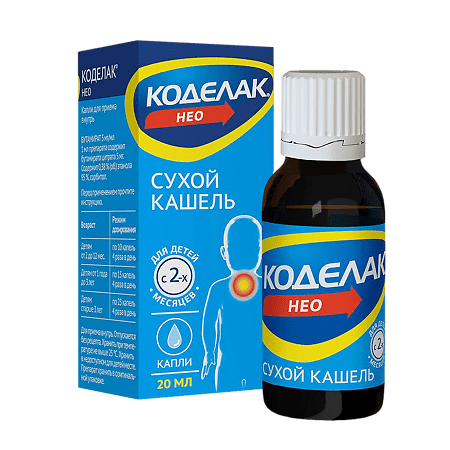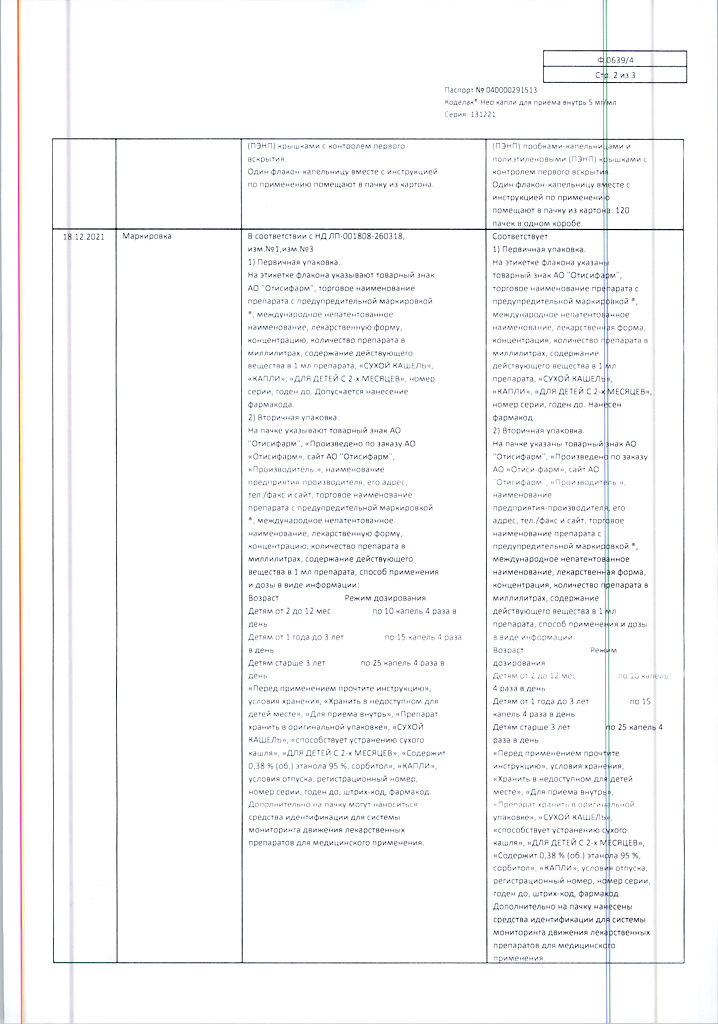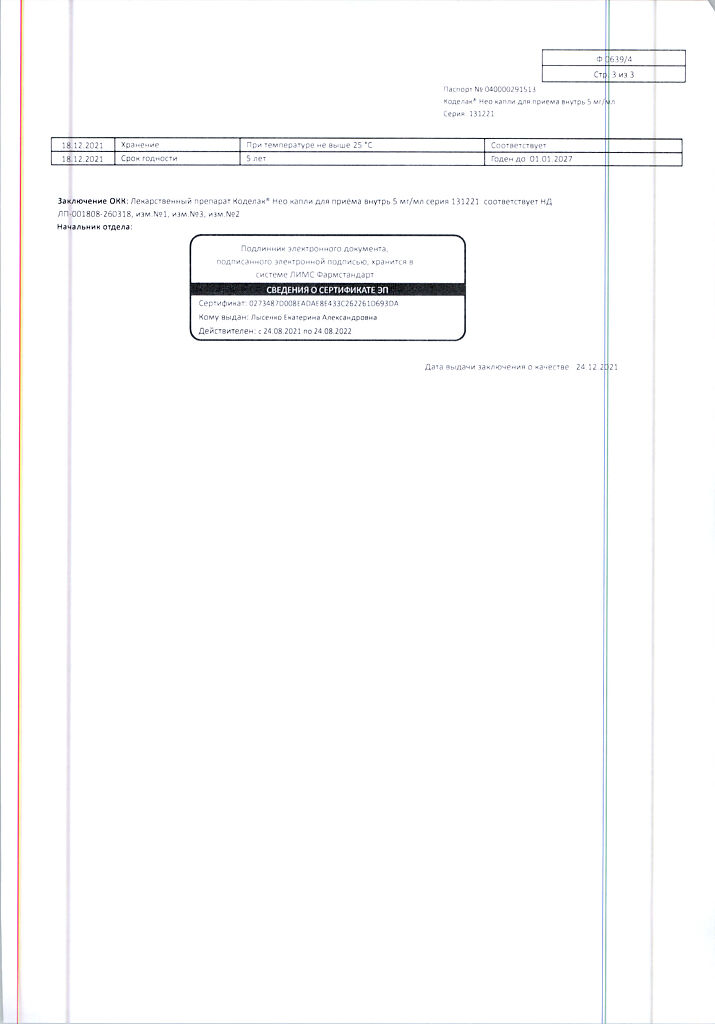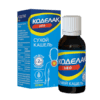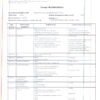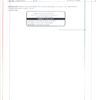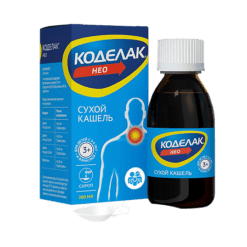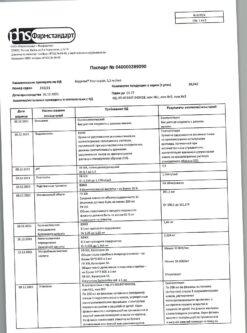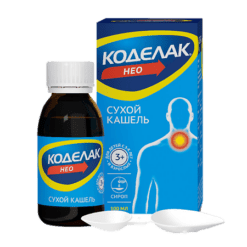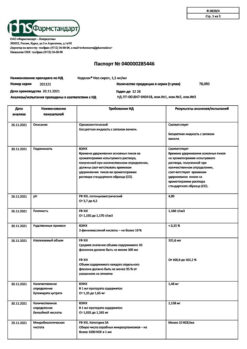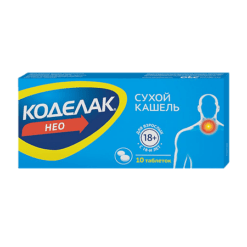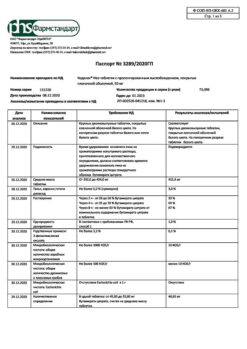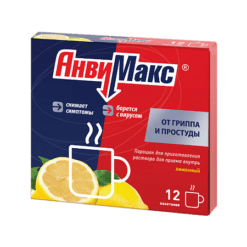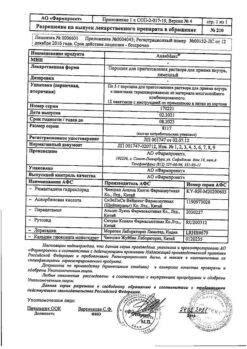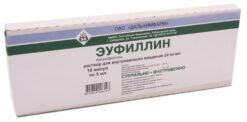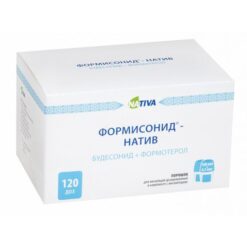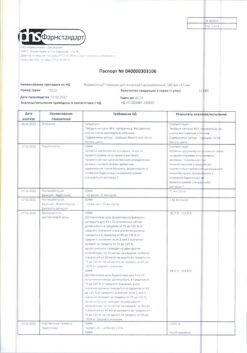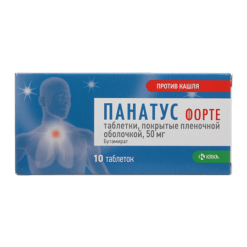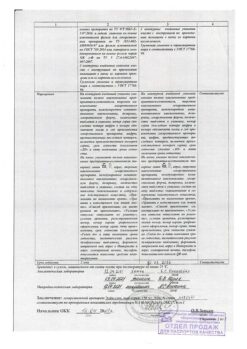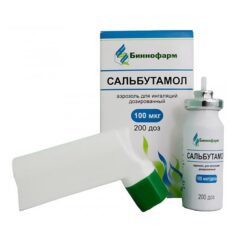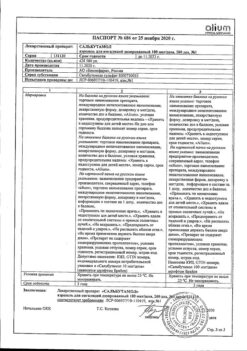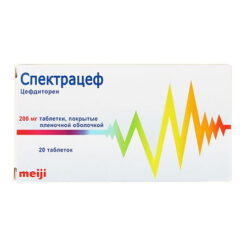No products in the cart.
Codelac Neo, drops 5 mg/ml 20 ml
€11.15 €9.29
Description
Pharmacodynamics
Butamirate, the active ingredient of Codelac® Neo, is an anti-cough agent of central action. It is neither chemically nor pharmacologically related to opium alkaloids. It is not addictive or addictive.
It suppresses cough having a direct effect on the coughing center. It has a bronchodilator effect (dilates the bronchi). Helps ease breathing by improving spirometry (reduces airway resistance) and blood oxygenation (saturates blood with oxygen).
Pharmacokinetics
Intake
After oral administration, butamirate is quickly and completely absorbed from the gastrointestinal tract. After taking 150 mg of butamirate, the maximum concentration of the main metabolite (2-phenyl butyric acid) in blood plasma is reached after about 1.5 hours and is 6.4 µg/ml.
Distribution and metabolism
Hydrolysis of butamyrate, initially to 2-phenyl butyric acid and diethylaminoethoxyethanol, begins in the blood. These metabolites also have antitussive activity, and, like butamirate, are largely (about 95%) bound to plasma proteins, which accounts for their long elimination half-life. 2-phenyl butyric acid is partially metabolized by hydroxylation.
There is no cumulation if the drug is taken repeatedly.
Elimation
The elimination half-life of butamirate is 6 hours. The metabolites are eliminated mainly by the kidneys. And 2-phenyl butyric acid is excreted mainly in the form bound to glucuronic acid.
Indications
Indications
Dry cough of any etiology, including whooping cough; to suppress cough in the preoperative and postoperative period, during surgical interventions and bronchoscopy.
Pharmacological effect
Pharmacological effect
Pharmacodynamics
Butamirate, the active substance of Codelac® Neo, is a centrally acting antitussive agent. It is not classified as an opium alkaloid either chemically or pharmacologically. Does not form dependence or addiction.
Suppresses cough, having a direct effect on the cough center. Has a bronchodilator effect (expands the bronchi). Helps make breathing easier by improving spirometry (reduces airway resistance) and blood oxygenation (saturates the blood with oxygen).
Pharmacokinetics
Suction
After oral administration, butamirate is quickly and completely absorbed from the gastrointestinal tract. After taking 150 mg of butamirate, the maximum concentration of the main metabolite (2-phenylbutyric acid) in the blood plasma is reached after approximately 1.5 hours and is 6.4 mcg/ml.
Distribution and metabolism
Hydrolysis of butamirate, initially to 2-phenylbutyric acid and diethylaminoethoxyethanol, begins in the blood. These metabolites also have antitussive activity and, like butamirate, are highly (about 95%) bound to plasma proteins, resulting in their long half-life. 2-phenylbutyric acid is partially metabolized by hydroxylation.
When taking the drug again, no accumulation is observed.
Removal
Half-life
butamirata – 6 hours. Metabolites are excreted mainly by the kidneys. Moreover,
2-phenylbutyric acid is mainly excreted bound to glucuronic acid.
acid form.
Special instructions
Special instructions
The drops contain sodium saccharinate and sorbitol as sweeteners, so it can be used in patients with diabetes.
Due to the presence of ethyl alcohol in the drug, there is a danger when using the drug in patients with a tendency to develop drug dependence, with liver diseases, alcoholism, epilepsy, brain diseases, pregnant women and children.
Impact on the ability to drive vehicles and machinery
Recommended
refrain from driving vehicles and engaging in other activities
potentially hazardous activities that require increased concentration
attention and speed of psychomotor reactions, since the drug can cause
dizziness, drowsiness.
Active ingredient
Active ingredient
Butamirat
Composition
Composition
Composition per bottle:
active ingredient:
butamirate citrate (in terms of 100% substance) – 100.0 mg;
excipients:
sorbitol (Neosorb 70/70 B, sorbitol syrup) – 8100.0 mg,
glycerol (glycerin) – 5800.0 mg,
ethanol 95% (ethyl alcohol 95%) – 61.0 mg,
sodium saccharinate – 23.0 mg,
benzoic acid – 23.0 mg,
vanillin – 23.0 mg,
sodium hydroxide solution 30% – 10.0 mg,
water
purified – up to 20 ml.
Pregnancy
Pregnancy
There is no data on the safety of the drug during pregnancy and its passage through the placental barrier. The use of the drug in the first trimester of pregnancy is contraindicated. In the second and third trimesters of pregnancy, the use of the drug is possible taking into account the balance of benefit to the mother and potential risk to the fetus.
Drug penetration
into breast milk has not been studied, so use of the drug during breastfeeding
breastfeeding is not recommended.
Contraindications
Contraindications
Hypersensitivity to the components of the drug, fructose intolerance, pregnancy (first trimester), breastfeeding period. Children’s age up to 2 months.
With caution
Pregnancy (II and III trimesters).
Due to the presence in
the composition of the drug ethyl alcohol should be used with caution in patients with
tendency to develop drug dependence, with liver diseases,
alcoholism, epilepsy, brain diseases, pregnant women and children.
Side Effects
Side Effects
Classification of the frequency of adverse reactions: very often (≥1/10); often (≥1/100, <1/10); uncommon (≥1/1000, <1/100); rare (≥1/10000, <1/1000); very rare (< 1/10000), including isolated reports.
From the nervous system:
Rarely: drowsiness, dizziness, which goes away when the drug is stopped or the dose is reduced.
From the gastrointestinal tract:
Rarely: nausea, diarrhea.
For the skin and subcutaneous tissues:
Rarely: urticaria,
the development of allergic reactions is possible.
Interaction
Interaction
No drug interactions have been reported for butamirate. During treatment with the drug, it is not recommended to drink alcoholic beverages, as well as drugs that depress the central nervous system (hypnotics, antipsychotics, tranquilizers and other drugs).
Due to the fact that
butamirate suppresses the cough reflex, simultaneous
use of expectorants to prevent the accumulation of mucus in the respiratory tract
ways with a risk of developing bronchospasm and respiratory tract infection.
Overdose
Overdose
Symptoms: nausea, vomiting, drowsiness, diarrhea, dizziness, decreased blood pressure, impaired coordination of movements.
Treatment: activated
charcoal, saline laxatives, symptomatic therapy (according to indications).
Storage conditions
Storage conditions
At a temperature not higher than 25 oC.
Keep out of reach of
children place.
Shelf life
Shelf life
5 years.
Manufacturer
Manufacturer
Pharmstandard-Leksredstva, Russia
Additional information
| Shelf life | 5 years. |
|---|---|
| Conditions of storage | At a temperature not exceeding 25 oC. Keep out of reach of children. |
| Manufacturer | Pharmstandard-Leksredstva, Russia |
| Medication form | oral drops |
| Brand | Pharmstandard-Leksredstva |
Other forms…
Related products
Buy Codelac Neo, drops 5 mg/ml 20 ml with delivery to USA, UK, Europe and over 120 other countries.

